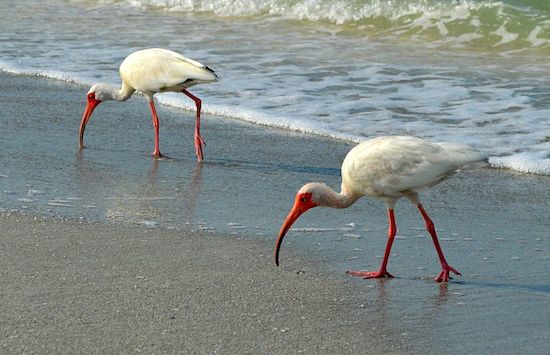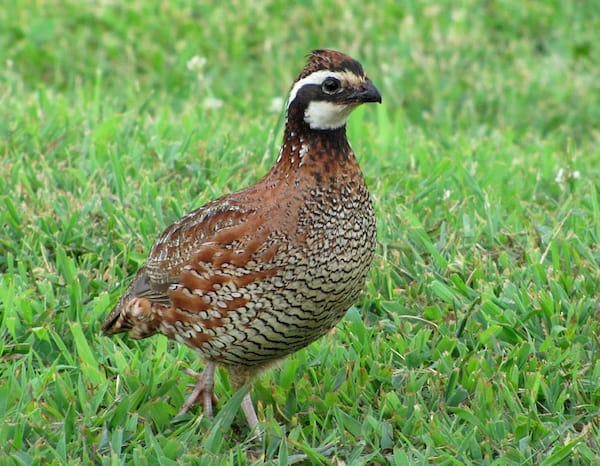One of the most easily identified and familiar southeastern wetland birds, the white ibis wanders widely in search of crustaceans and other prey. In good light, these birds gleam when set against a marshy backdrop, and you can tell them from herons by their outstretched necks and flap-and-glide flight.
Stragglers may be found alone, but most often white ibis are seen in small or large flocks. An adult white ibis is easy to identify—whether at rest, feeding, or flying—thanks to its red legs and red, down-curved bill, which stand out on an otherwise white bird.
In flight, the wing tips flash black, as if they have been dipped in ink. Immature birds can be quickly differentiated from all-dark glossy ibis by their whitish underparts and orange bills, and by white back patches that are often visible when birds are molting into adult plumage.
Listen for
A dull-sounding uhn! Most commonly heard from the nesting colonies.
Find it
A fixture in wetlands from Virginia (a recent expansion) and southward along the coast through Mexico to Central and northern South America, the white ibis can be found in a variety of shallow habitats—from swamps and marshes to rice plantations and coastal lagoons.
They nest and most frequently occur in freshwater habitats, although adults also feed in brackish and saltwater wetlands. Most nesting occurs near the coast, with birds dispersing inland and up and down the coast after breeding season.
Feed it
The white ibis’s diet is heavy on crustaceans where available, including fiddler crabs, crayfish, grass shrimp, and others. Insects and some small fish and snakes, frogs, snails, and other animals are also caught and eaten. Young birds cannot tolerate salt and must feed on freshwater prey, such as crayfish.
Nesting Behavior
The white ibis nests in colonies in trees and shrubs, often on islands where it finds protection from raccoons and other predators. It rarely nests on the ground. The nest, a platform of twigs and leaves, is most often placed between 6 and 10 feet above the ground. The female lays two or three eggs, which are incubated by both parents for about three weeks. After the chicks hatch, they stay close to the nest and usually don’t leave the colony for at least six weeks.




